The National Mexican Rite is a rite of Freemasonry founded in Mexico in about 1834. [1]
| Part of a series on |
| Freemasonry |
|---|
 |
The National Mexican Rite is a rite of Freemasonry founded in Mexico in about 1834. [1]
The rite consists of six further degrees after the degree of Master Mason (commonly known as the third degree). They are fourth degree (Approved Master), fifth-degree (Knight of the Secret), sixth-degree (Knight of the Mexican Eagle), seventh-degree (Perfect Architect), eighth degree (Grand Judge), and ninth degree (Grand Inspector General). [2] The rituals of the degrees were largely adapted from the Scottish Rite. [1]
The rite is governed by two bodies, a Grand Orient, and a National Grand Lodge. The former was composed of all members holding the ninth degree and was supreme in matters of doctrine and ritual. The latter is an elected organization responsible for the administration. [2]

Freemasonry or simply Masonry includes various fraternal organisations that trace their origins to the local guilds of stonemasons that, from the end of the 14th century, regulated the qualifications of stonemasons and their interaction with authorities and clients. Freemasonry is the oldest fraternity in the world and among the oldest continued organizations in history.
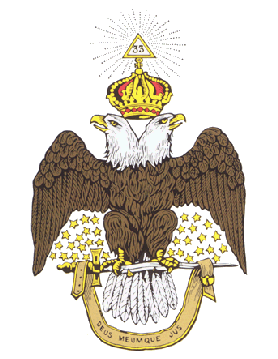
The Ancient and Accepted Scottish Rite of Freemasonry is a rite within the broader context of Freemasonry. It is the most widely practiced Rite in the world. In some parts of the world, and in the Droit Humain, it is a concordant body and oversees all degrees from the 1st to 33rd degrees, while in other areas, a Supreme Council oversees the 4th to 33rd degrees.
In Anglo-American Freemasonry, York Rite, sometimes referred to as the American Rite, is one of several Rites of Freemasonry. It is named after York, in Yorkshire, England, where the Rite was supposedly first practiced.
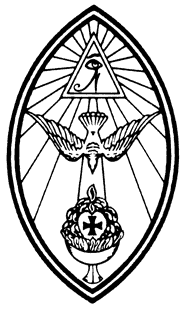
Ordo Templi Orientis is an occult secret society and hermetic magical organization founded at the beginning of the 20th century. The origins of O.T.O. can be traced back to the German-speaking occultists Carl Kellner, Theodor Reuss, Heinrich Klein, and Franz Hartmann. In its first incarnation, O.T.O. was intended to be modelled after and associated with European Freemasonry and as such in its early years only Freemasons could seek admittance.
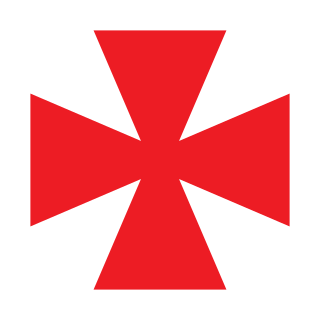
The Swedish Rite is a variation or Rite of Freemasonry that is common in Scandinavian countries and to a limited extent in Germany. It is different from other branches of Freemasonry in that, rather than having the three self-contained foundation degrees and seemingly-endless side degrees and appendant bodies, it has an integrated system with ten degrees. It is also different in that, rather than moving through the offices or 'chairs', progress in the Swedish Rite is based on moving through the ten degrees. A fundamental difference is the Swedish Rite's position on religious affiliation: Anglo/American 'Regular' Masonry requires a belief in any theistic religion and Continental 'Liberal' Masonry does not require belief in any religion, whereas Swedish Masonry is specifically Christian, and requires a Christian trinitarian belief in all its members. Nonetheless, the main Swedish Rite constitutions are all recognised as regular by the United Grand Lodge of England, and stand in full amity.
The Ancient and Primitive Rite, also called the Order of the Ancient and Primitive Rite of Memphis-Mizraim, is a Masonic Rite first popularized by John Yarker. It has been considered irregular by Masonic organisations such as the United Grand Lodge of England since at least 1860.
Jahbulon or Jabulon or Jahbuhlun is a word which is allegedly used in some rituals of Royal Arch Masonry and derivations thereof.

The International Order of Freemasonry Le Droit Humain is a global Masonic Order, membership of which is available to men and women on equal terms, regardless of nationality, religion or ethnicity.

The Knights Templar, full name The United Religious, Military and Masonic Orders of the Temple and of St John of Jerusalem, Palestine, Rhodes and Malta, is a fraternal order affiliated with Freemasonry. Unlike the initial degrees conferred in a regular Masonic Lodge, which only require a belief in a Supreme Being regardless of religious affiliation, the Knights Templar is one of several additional Masonic Orders in which membership is open only to Freemasons who profess a belief in Christianity. One of the obligations entrants to the order are required to declare is to protect and defend the Christian faith. The word "United" in its full title indicates that more than one historical tradition and more than one actual order are jointly controlled within this system. The individual orders 'united' within this system are principally the Knights of the Temple, the Knights of Malta, the Knights of St Paul, and only within the York Rite, the Knights of the Red Cross.
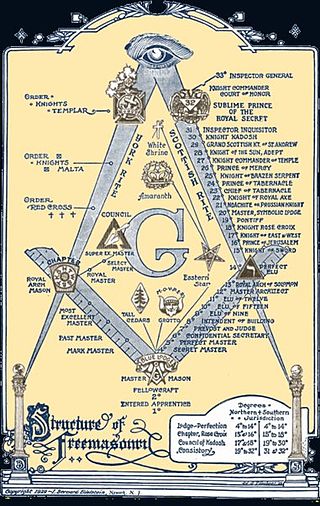
There are many organisations and orders which form part of the widespread fraternity of Freemasonry, each having its own structure and terminology. Collectively these may be referred to as Masonic bodies, Masonic orders, Concordant bodies or appendant bodies of Freemasonry.
The Knight Kadosh is a Freemasonic degree or ceremony of initiation performed by a number of Supreme Councils of the Ancient and Accepted Scottish Rite of Freemasonry. It is the 30th Degree of the Southern Jurisdiction of the Scottish Rite for the United States of America, and the Ancient and Accepted Scottish Rite of Freemasonry of Canada. The Northern Masonic Jurisdiction of the Scottish Rite, does not currently confer a degree with the name Knight Kadosh. Instead its thirtieth degree is entitled "Grand Inspector."
Freemasonry in Denmark was first established in 1743 and is today represented by a number of Grand Lodges. The oldest and biggest Masonic Grand Lodge in Denmark is the Danish Order of Freemasons, in English also known as the Grand Lodge of Denmark.

The Rectified Scottish Rite historically known under the RER acronyme, also known as the Rectified Rite or rarely RSR, is a Christian Masonic rite with a long and complex history. It was founded in 1778 at the Convent of Lyon in France under the leadership of Jean-Baptiste Willermoz, who served as the primary architect and driving force behind its formation. It emerged as a reform and restructuring of the earlier Templar Strict Observance system that had spread in Germany and France in the mid-18th century.

Masonic ritual is the scripted words and actions that are spoken or performed during the degree work in a Masonic lodge. Masonic symbolism is that which is used to illustrate the principles which Freemasonry espouses. Masonic ritual has appeared in a number of contexts within literature including in "The Man Who Would Be King", by Rudyard Kipling, and War and Peace, by Leo Tolstoy.
The history of Freemasonry in Mexico can be traced to at least 1806 when the first Masonic lodge was formally established in the nation.
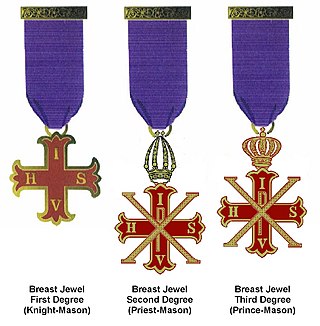
The Red Cross of Constantine, or more formally the Masonic and Military Order of the Red Cross of Constantine and the Appendant Orders of the Holy Sepulchre and of St John the Evangelist, is a Christian fraternal order of Freemasonry. Candidates for the order must already be members of Craft Freemasonry (lodge) and Royal Arch Freemasonry (chapter); they must also be members of the Christian religion, and proclaim their belief in the Christian doctrine of the Holy Trinity.
Freemasonry in Scotland in lodges chartered by the Grand Lodge of Scotland comprises the Scottish Masonic Constitution as regular Masonic jurisdiction for the majority of freemasons in Scotland. There are also lodges operating under the Scottish Masonic Constitution in countries outside of Scotland. Many of these are countries linked to Scotland and the United Kingdom through the Commonwealth of Nations and prior colonies and other settlements of the British Empire although there are several lodges in countries such as Lebanon, Belgium, Chile and Peru, which do not have such connections.
The Rite of Baldwyn or Rite of Seven Degrees is one of several Rites of Freemasonry. It exists and is only practised in the Masonic Province of Bristol, England in Freemason's Hall. A Rite is a series of progressive degrees that are conferred by various Masonic organizations or bodies, each of which operates under the control of its own central authority. The Rite of Baldwyn specifically is a collection of separate Masonic Bodies and associated Degrees that would otherwise operate independently. The three primary bodies in the York Rite are the degrees of Craft Freemasonry, the Supreme Order of the Holy Royal Arch, and the Camp of Baldwyn.

The Grand Lodge of Ancient, Free And Accepted Masons of New Mexico is the oldest and largest of the two regular Masonic Grand Lodges in the State of New Mexico. It was founded on August 7, 1877, in Santa Fe, New Mexico.